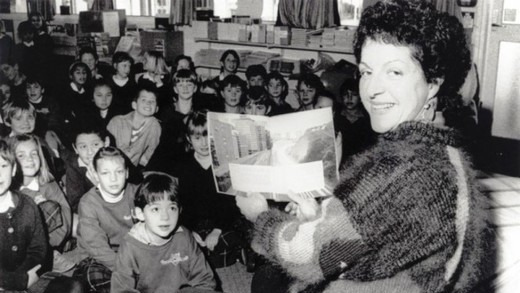Alex Collins from Lift Publishing reflects on the value that Educational Publishing has to New Zealand’s curriculum, and explains why ‘teachers need access to rich materials that value local knowledge and ensure that students’ learning is relevant and meaningful.’

It was a winding road that led me to educational publishing. After 12 years in the film industry – 18-hour days, six-day weeks, weekends, nights, months away from home – I decided I needed a life. So I went primary teaching (cue snorts of derisive laughter from teachers across New Zealand). And while teaching certainly didn’t provide me with a life of leisure, it did give me a new passion, not just for the actual hands-on teaching but also for the abundance of rich literacy materials that filled my school’s resource room. I wallowed in them, especially the local content.
After further study, I joined Learning Media and learned firsthand the intricacies of educational publishing and the level of pedagogical and publishing expertise that goes into the books in our classrooms. It was there that I also became more aware of the part educational publishing plays in nurturing a nation of readers.
New Zealand’s education system
Both within New Zealand and internationally, our education system has had a huge impact on students’ learning. We’re well-known for the quality of our teachers, our progressive curriculum, and our educational publishing sector’s innovative approaches to learning (such as the development of the “big book” for shared reading and 8–16 page small books for small-group guided reading).
Our system ensures that students experience a curriculum that acknowledges New Zealand’s unique heritage – both our bicultural identity and our much more recent multiculturalism. Therefore, teachers need access to rich materials that value local knowledge and ensure that students’ learning is relevant and meaningful. Educational resources created and written in New Zealand, for New Zealanders, have a special part to play in supporting student success and developing what The New Zealand Curriculum terms ‘confident, connected, lifelong learners’.

New Zealand educational publishing and schools
Schools in New Zealand have an extensive range of local and international resources to choose from – including teacher-created resources, those produced by educational publishers, and the Ministry of Education’s resources (such as the School Journal). All have a part to play in meeting the learning needs of teachers and students.
New Zealand has a long history of publishing educational materials – the Ministry of Education’s School Journal was first published in 1907. Locally produced commercial materials have also been used in New Zealand schools and around the world for over 40 years. Early on, Dame Marie Clay’s Reading Recovery programme proved itself at home before spreading its wings overseas, and pioneers of early literacy materials, Dame Wendy Pye and Joy Cowley, conquered the world.
New Zealand educational publishers provide the high-quality, curated content that’s crucial for a high-performing education system.
New Zealand educational publishers provide the high-quality, curated content that’s crucial for a high-performing education system. They are supported in their work by a talented community of authors and illustrators. Many of the authors are practising teachers or subject matter experts (such as scientists). Both authors and illustrators often work not just across educational publishing but also for trade publishers and corporate clients. And while our publishers are known for the quality of their literacy materials, they also publish for other curriculum areas (such as science, mathematics, English language learning), and develop innovative digital resources.
Educational publishing in New Zealand remains largely unseen by the public when compared with trade publishing’s high profile – its renowned authors, well attended book awards, international sales, and awards successes. Having said that, the educational publishing sector is a strong performer both nationally and internationally, with exports to more than 60 countries and international earnings of over $20 million a year.
A nation of readers
The New Zealand Government talks about ‘creating a nation of readers with the skills for a modern life, to build social cohesion, participation, and well-being’. A robust and innovative educational publishing industry is essential for supporting this vision and for our ability to develop a competitive, knowledge-based economy. Schools, and the resources they use, are the foundation for this, but we also need to join the dots between home, school, libraries, agencies such as the Book Council, the National Library, Literacy Aotearoa, Department of Corrections, and any other organisation whose focus is the improvement of people’s lives.
And let’s not forget teachers. How reading is ‘seen’ in the classroom is incredibly important. Not long ago, I visited a school that’s very digitally focused but also committed to providing a rich literacy programme for their students. I was in a year 5–6 classroom before school when the bell rang. The students came into class, awaiting their teacher, and what did they do? They all got out a chapter book or a novel and began to read.
A nation in the making.
Alex Collins
Alex oversees the day-to-day management of all three divisions of Lift Education. His journey has been a varied one – one that includes work in the theatre, on film sets, in primary classrooms, and finally scratching away at the typeface in publishing as an editor, project manager, team leader, and now chief executive. He is passionate about education for all, and providing teachers and students with the skills, knowledge, and tools they need to succeed.



